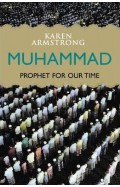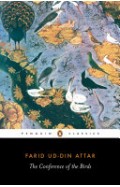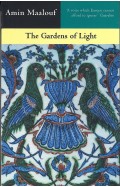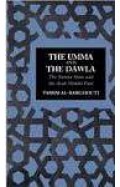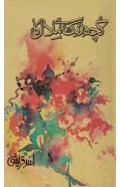ENCYCLOPAEDIA OF ISLAMIC SPIRITUALITY
By: Seyyed Hossein Nasr
-
Rs 2,080.00
- Rs 2,600.00
- 20%
You save Rs 520.00.
Due to constant currency fluctuation, prices are subject to change with or without notice.
ENCYCLOPAEDIA OF ISLAMIC SPIRITUALITY
(Volume-I/II) Foundations/Manifestations
ENCYCLOPAEDIA OF ISLAMIC SPIRITUALITY] Volume-I: Foundations tJ Seyyed Hossein Nasr The first volume on Islamic spirituality is devoted to Foundations, not simply the historical foundations but the essential foundations as the principle and source of the multiform Manifestations of Islamic Spirituality (Volume II) in history and in various Islamic cultural zones. The first part of the work is concerned with “The Roots of the Islamic Tradition and Spirituality” which include the Qur’an as the central theophany of Islam, the Prophet who received the Word of God and the rites namely, daily prayer, fasting, pilgrimage, and jihad. Chapters in this section are devoted to the Qur’an, to the traditional esoteric commentaries on the Qur’an, to the life, traditions, and sayings of the Prophet and the inner or spiritual “Substance” of the Prophet. Second part then takes up the major segments or divisions of the Islamic community with their distinctive pieties and emphases. Female spirituality is also considered here. Next, the whole of Part three is devoted to Sufism, Islamic Spirituality in its inner dimension; the nature and origin of Sufism, its early development, its various spiritual practices, and its science of the soul, or “psychotherapy.” Finally, the fourth part of the volume is devoted to “Knowledge of Reality,” specifically, the knowledge of God, of the Angels, of the cosmos and the natural order, of man, and of the last things. The volume includes a glossary, an extensive bibliography, subject and name indexes, and numerous illustrations.
ENCYCLOPAEDIA OF ISLAMIC SPIRITUALITY Volume-II: Manifestations This second volume deals with Islamic spirituality as it has developed and manifested itself in various periods of history and in diverse areas of the Islamic world. Chief among the manifestations of Islamic spirituality in history has been Sufism; which has had an immense impact on art and thought as well as the social, economic, and political life of Muslims from Nigeria to the Philippines and from China to Albania. A large part of this volume is therefore devoted to Sufism and the teachings, practices, writings, and impact of the Sufi orders throughout the Islamic world. The second part of the volume is devoted to literature as a mirror of Islamic spirituality. The major literary traditions— Arabic, Persian, Turkish, the literatures of the Indian subcontinent, Malay and the literatures of Africa— are treated to the extent to which they reflect the deepest yearnings of the Muslim’s soul for God and the spiritual world. Finally, the last part of the volume deals with Islamic thought and art: with philosophy and theology and the so-called hidden sciences, especially the science of letters, and with music, sacred dance, and the plastic arts. Throughout the volume the focus upon the various regions of the Islamic world brings out the local ethnic, social, and cultural factors that have coloured the manifestations of Islamic spirituality over the ages.
ENCYCLOPAEDIA OF ISLAMIC SPIRITUALITY
(Volume-I/II) Foundations/Manifestations
ENCYCLOPAEDIA OF ISLAMIC SPIRITUALITY] Volume-I: Foundations tJ Seyyed Hossein Nasr The first volume on Islamic spirituality is devoted to Foundations, not simply the historical foundations but the essential foundations as the principle and source of the multiform Manifestations of Islamic Spirituality (Volume II) in history and in various Islamic cultural zones. The first part of the work is concerned with “The Roots of the Islamic Tradition and Spirituality” which include the Qur’an as the central theophany of Islam, the Prophet who received the Word of God and the rites namely, daily prayer, fasting, pilgrimage, and jihad. Chapters in this section are devoted to the Qur’an, to the traditional esoteric commentaries on the Qur’an, to the life, traditions, and sayings of the Prophet and the inner or spiritual “Substance” of the Prophet. Second part then takes up the major segments or divisions of the Islamic community with their distinctive pieties and emphases. Female spirituality is also considered here. Next, the whole of Part three is devoted to Sufism, Islamic Spirituality in its inner dimension; the nature and origin of Sufism, its early development, its various spiritual practices, and its science of the soul, or “psychotherapy.” Finally, the fourth part of the volume is devoted to “Knowledge of Reality,” specifically, the knowledge of God, of the Angels, of the cosmos and the natural order, of man, and of the last things. The volume includes a glossary, an extensive bibliography, subject and name indexes, and numerous illustrations.
ENCYCLOPAEDIA OF ISLAMIC SPIRITUALITY Volume-II: Manifestations This second volume deals with Islamic spirituality as it has developed and manifested itself in various periods of history and in diverse areas of the Islamic world. Chief among the manifestations of Islamic spirituality in history has been Sufism; which has had an immense impact on art and thought as well as the social, economic, and political life of Muslims from Nigeria to the Philippines and from China to Albania. A large part of this volume is therefore devoted to Sufism and the teachings, practices, writings, and impact of the Sufi orders throughout the Islamic world. The second part of the volume is devoted to literature as a mirror of Islamic spirituality. The major literary traditions— Arabic, Persian, Turkish, the literatures of the Indian subcontinent, Malay and the literatures of Africa— are treated to the extent to which they reflect the deepest yearnings of the Muslim’s soul for God and the spiritual world. Finally, the last part of the volume deals with Islamic thought and art: with philosophy and theology and the so-called hidden sciences, especially the science of letters, and with music, sacred dance, and the plastic arts. Throughout the volume the focus upon the various regions of the Islamic world brings out the local ethnic, social, and cultural factors that have coloured the manifestations of Islamic spirituality over the ages.
The Heart Of Islam Enduring Values For HumanityNs327
By: Seyyed Hossein Nasr
Rs 1,756.00 Rs 2,195.00 Ex Tax :Rs 1,756.00
The Study Quran: A New Translation and Commentary -- Leather Edition
By: Seyyed Hossein Nasr
Rs 14,395.50 Rs 15,995.00 Ex Tax :Rs 14,395.50
Sadr Al-Din Shirazi and his Trasncendent
By: Seyyed Hossein Nasr
Rs 552.50 Rs 650.00 Ex Tax :Rs 552.50
The Study Quran: A New Translation and Commentary
By: Seyyed Hossein Nasr
Rs 7,596.00 Rs 9,495.00 Ex Tax :Rs 7,596.00
A Young Muslims Guide to the Modern World
By: Seyyed Hossein Nasr
Rs 720.00 Rs 900.00 Ex Tax :Rs 720.00
Zubin Mehta: A Musical Journey (An Authorized Biography)
By: VOID - Bakhtiar K. Dadabhoy
Rs 892.50 Rs 1,050.00 Ex Tax :Rs 892.50
ENCYCLOPAEDIA OF ISLAMIC PHILOSOPHY (Two Volumes)
By: VOID - Seyyed Hossein Nasr
Rs 2,400.00 Rs 3,000.00 Ex Tax :Rs 2,400.00
A Young Muslims Guide to the Modern World
By: Seyyed Hossein Nasr
Rs 720.00 Rs 900.00 Ex Tax :Rs 720.00
The Study Quran: A New Translation and Commentary
By: Seyyed Hossein Nasr
Rs 7,596.00 Rs 9,495.00 Ex Tax :Rs 7,596.00
The Inner Journey Views From the Islamic Tradition
By: William Chittick
Rs 760.00 Rs 950.00 Ex Tax :Rs 760.00
1001 Inventions The Enduring Legacy Of Muslim Civilization
By: Salim T S Al-Hassani
Rs 6,540.75 Rs 7,695.00 Ex Tax :Rs 6,540.75
Goodnight Stories from the Life of Sahabah PBUH
By: Saniyasnain Khan
Rs 4,135.50 Rs 4,595.00 Ex Tax :Rs 4,135.50
ENCYCLOPAEDIA OF ISLAMIC PHILOSOPHY (Two Volumes)
By: VOID - Seyyed Hossein Nasr
Rs 2,400.00 Rs 3,000.00 Ex Tax :Rs 2,400.00
A Young Muslims Guide to the Modern World
By: Seyyed Hossein Nasr
Rs 720.00 Rs 900.00 Ex Tax :Rs 720.00
The Study Quran: A New Translation and Commentary
By: Seyyed Hossein Nasr
Rs 7,596.00 Rs 9,495.00 Ex Tax :Rs 7,596.00
The Inner Journey Views From the Islamic Tradition
By: William Chittick
Rs 760.00 Rs 950.00 Ex Tax :Rs 760.00
No recently viewed books available at the moment.
Zubin Mehta: A Musical Journey (An Authorized Biography)
By: VOID - Bakhtiar K. Dadabhoy
Rs 892.50 Rs 1,050.00 Ex Tax :Rs 892.50
The Heart Of Islam Enduring Values For HumanityNs327
By: Seyyed Hossein Nasr
Rs 1,756.00 Rs 2,195.00 Ex Tax :Rs 1,756.00
The Study Quran: A New Translation and Commentary -- Leather Edition
By: Seyyed Hossein Nasr
Rs 14,395.50 Rs 15,995.00 Ex Tax :Rs 14,395.50
Sadr Al-Din Shirazi and his Trasncendent
By: Seyyed Hossein Nasr
Rs 552.50 Rs 650.00 Ex Tax :Rs 552.50
The Study Quran: A New Translation and Commentary
By: Seyyed Hossein Nasr
Rs 7,596.00 Rs 9,495.00 Ex Tax :Rs 7,596.00
A Young Muslims Guide to the Modern World
By: Seyyed Hossein Nasr
Rs 720.00 Rs 900.00 Ex Tax :Rs 720.00
ENCYCLOPAEDIA OF ISLAMIC PHILOSOPHY (Two Volumes)
By: VOID - Seyyed Hossein Nasr
Rs 2,400.00 Rs 3,000.00 Ex Tax :Rs 2,400.00
A Young Muslims Guide to the Modern World
By: Seyyed Hossein Nasr
Rs 720.00 Rs 900.00 Ex Tax :Rs 720.00
The Study Quran: A New Translation and Commentary
By: Seyyed Hossein Nasr
Rs 7,596.00 Rs 9,495.00 Ex Tax :Rs 7,596.00
The Inner Journey Views From the Islamic Tradition
By: William Chittick
Rs 760.00 Rs 950.00 Ex Tax :Rs 760.00













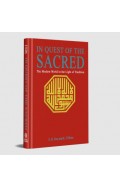








-120x187.jpg?q6)








